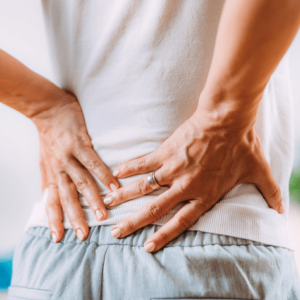Pain can be debilitating. More than half of Americans say they live with chronic or recurring pain, and general back pain—lower back pain, back spasms and/or sciatica—is one of the most common reasons people see a doctor.
FOLLOW US ON FACEBOOK & INSTAGRAM
Back pain can be defined as either acute, in which the patient recovers in six to eight weeks, or chronic, when someone experiences episodes of acute pain three or more times a year. Both chronic and acute back pain can interfere with everyday activities such as walking, sitting and sleeping. Both often result in missed days of work—chronic pain is one of the leading causes of disability claims.
Over-the-Counter & Prescription Back Pain Medication
Nearly half of those with back pain have suffered some type of trauma, but medicine still has little to offer as a solution. The most common treatments are over-the-counter medications, particularly non-steroidal anti-inflammatory drugs (NSAIDs) such as ibuprofen, naproxen and aspirin. Unfortunately, NSAIDs can have side effects such as nausea, ulcers and stomach upset. Plus, they’re often not strong enough to combat serious pain.
When NSAIDs aren’t enough, doctors may prescribe opioids, such as hydrocodone, to address the pain. Long-term opioid use is problematic—it can lead to addiction as well as anxiety, depression, insomnia and other problems. Unfortunately, for those with serious pain, there have been few other options available. This is changing though with the legalization of medical marijuana in many states.
Cannabis Is Safer Than Opioids & Just as Effective
Researchers have known since the 1970s that tetrahydrocannabinol (THC), a cannabinoid found in marijuana, is effective for many types of pain. And even recent studies show that THC reduces pain and improves sleep without any serious adverse effects. However, due to cannabis’s classification as a Schedule 1 drug, research has been stifled. But with the march towards legalizing medical marijuana, research has picked up and the general takeaway is that marijuana is extremely effective for reducing pain.
RELATED: BEST MARIJUANA STRAINS FOR BACK PAIN
Cannabis appears to be as effective as—if not more effective than—routinely prescribed opioids—but without the side effects. A 2013 study by the University of Colorado found that nearly 90% of participants gained relief from their back pain with the use of cannabis, and 81% said it was effective as traditional painkillers. A study published this year by the drug company Ameritox concluded that 36% of marijuana users who also had a prescription for hydrocodone failed to take it, compared to only 27% of non-marijuana users. While it decried this failure as "medication non-compliance," the positive point is that 36% of cannabis users no longer felt the need to take an opioid drug to relieve their pain.
If you’re new to cannabis and want to learn more, take a look at our Cannabis 101 post. HelloMD can help you get your medical marijuana recommendation; it’s easy, private and 100% online.






